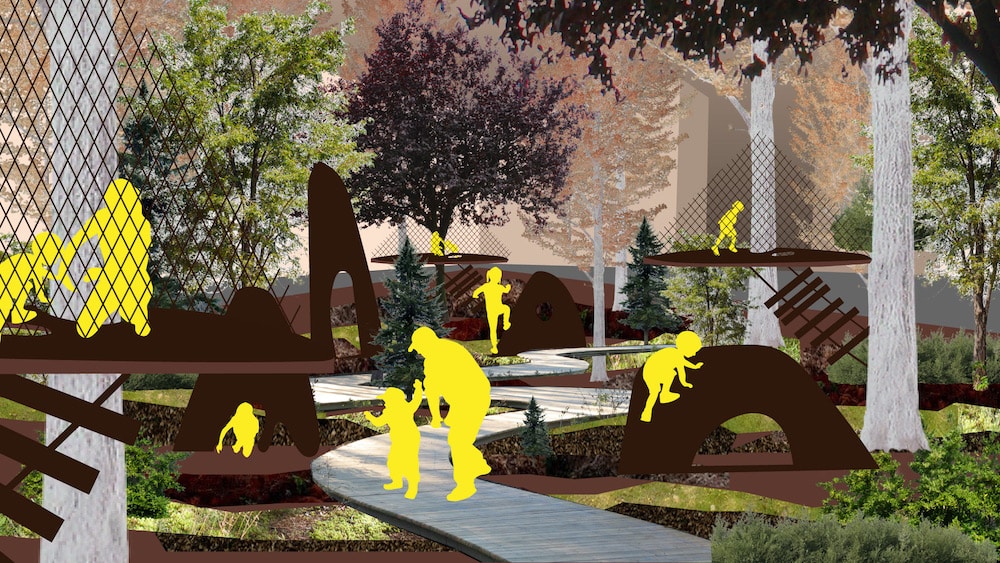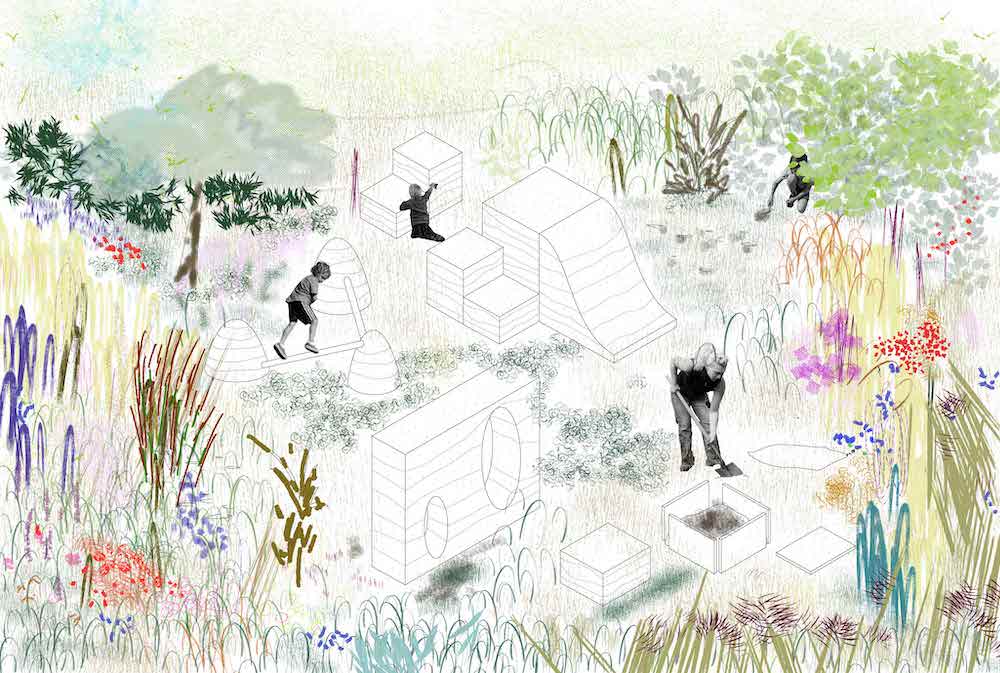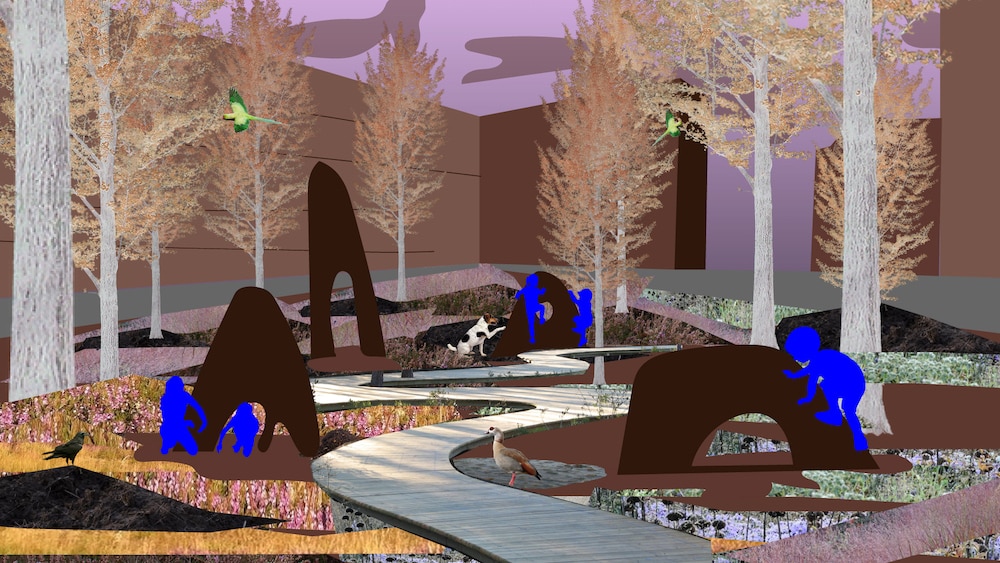Can Dirty Playgrounds Build Healthy Communities?

VISION: Encourage community-built public playgrounds that foster microorganism-rich dirt to remediate industrial toxins and provide space for gardening.
Team: Manuel Steitz, Coltrane McDowell, Serina Tarkhanian
School: Design Academy Eindhoven (2021)
The soil beneath urban areas can contain toxic residues left behind by factories that have long since shut down. Contaminants in soil such as lead and arsenic make it unsafe for children in some cities to play in the dirt. Needless to say, gardening is not advised.
These city-dwellers lose not only opportunities to tend green spaces and grow vegetables but also lack exposure to the many microbes in soil that can support human health.
Students from Design Academy Eindhoven imagined creating a multi-generational holobiont—or ecological community containing humans, animals, and insects, and also microbes, fungi, and viruses. The holobiont they envision is a public playground that evolves over time through ecological succession, incorporating green space, places for children to play and explore in dirt, and gardens for the community to grow food. Such a playground could contribute to the whole community’s social, economic, and physical well-being.
This vision extends beyond a fancy community garden; it aims to start by remediating the soil of the playground. The first step in this public works project is to test for contaminants at the site. Communities use plant species that indicate the presence of heavy metals or other toxins rather than employing costly equipment to perform soil analysis. They decontaminate the soil using phytomining, in which capable plant species, such as water-lily, remove the toxins. They could also transplant soil from neighboring forests, which is rich in microbial diversity.
The playground architecture could then be made with rehabilitated soil by using rammed earth natural construction techniques. Eventually, trees are planted around the playground to complete the transformation to a mature, symbiotic environment.
“Dirty Playground shows how our timeframes for built projects need to adapt to allow for more-than-human kin to thrive in our urban spaces. By designing a public recreational space, we see the potential of urban space becoming inclusive of all forms of life, strengthening and sharing our soil heritages, and a new approach to rewild cities,” Manuel Steitz, Coltrane McDowell, and Serina Tarkhanian explained.


